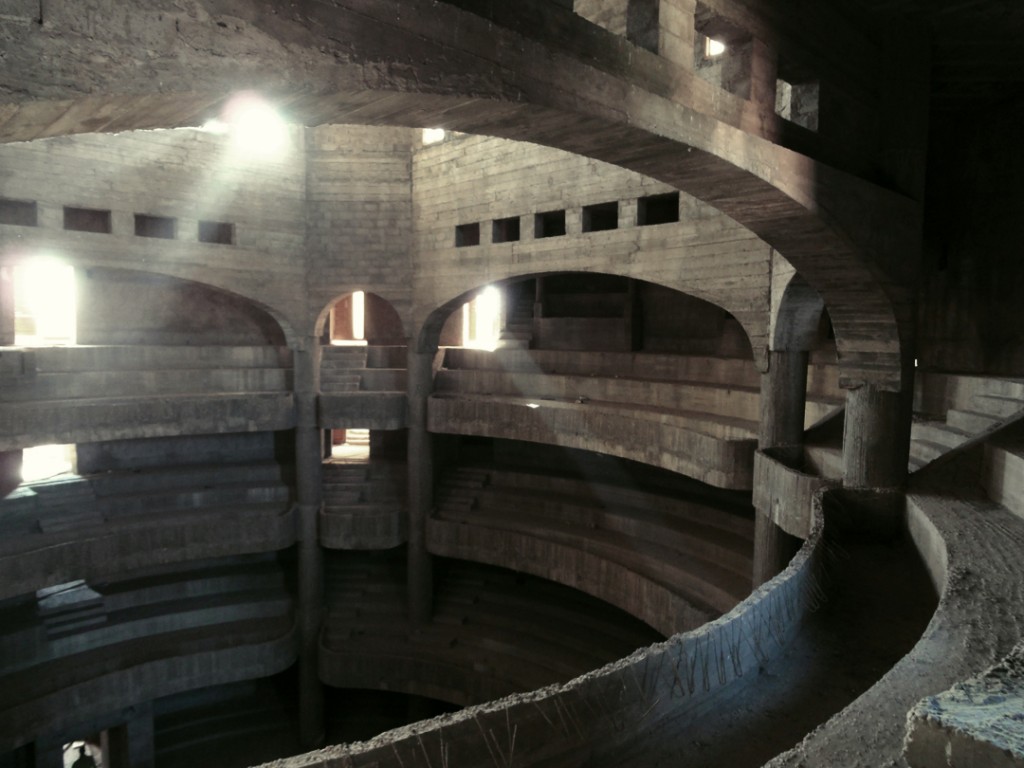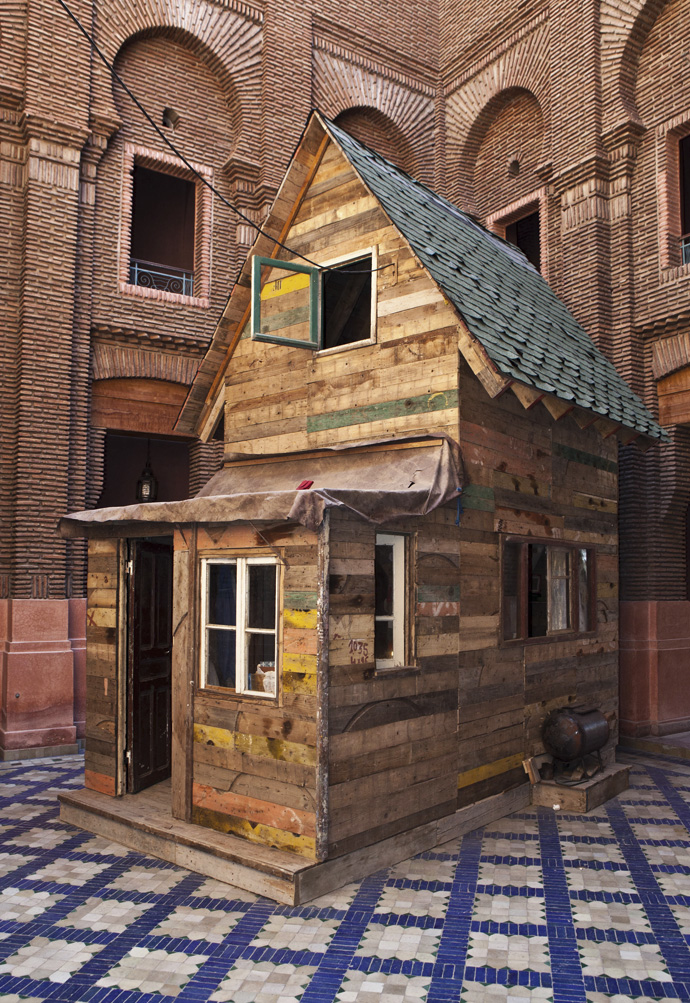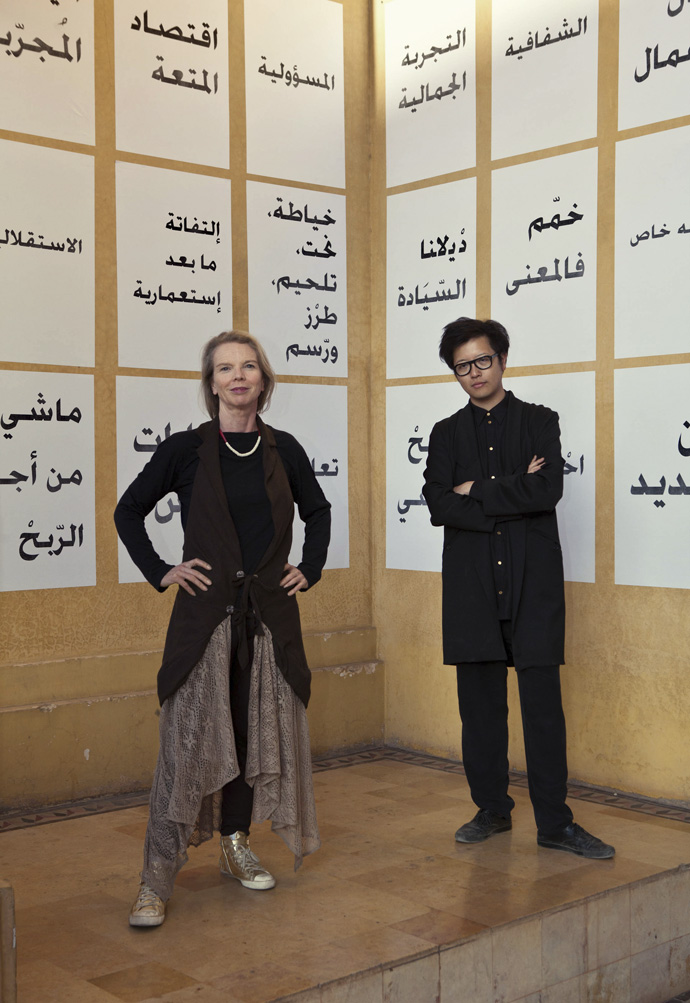HIGHER ATLAS – Marrakech Biennale
A special case, a special place, in a special time… an interview with curator Carson Chan.
The Théatre Royal, under construction.
Did you accustom to the local rhythm?
So did you surrender? Or is it the other way around?
How did your engagement with the Marrakech biennale and Nadim Samman come together?
You had initially planned the El Badi palace to be at the core of the Higher Atlas biennale. As I understand one of the challenges you faced with the change of administration was that at some point El Badi was no longer available. What were the consequences?
The consequences of losing the El Badi palace was pretty great in the end! The show now spans five different sites in and around Marrakech, so when traveling from one location to another, visitors, both local and from abroad, will begin to see the city as part of the context of the exhibition.
The Théâtre Royal, a half completed opera house commissioned by King Hassan II, the old foundations and underground cisterns of the sacred Koutoubia Mosque, the so-called Cyber Park (it’s owned by Moroc Telecom and has perhaps the best wifi in the city!), the Bank al-Maghrib building in the historic Djemaa el-Fna square as well as an large scale sculptural installation by Elin Hansdottir in the town of Tassoultante about 15km outside of the city are all places where we have exhibitions.
Particularly in the urban public spaces like the square, the park and Koutoubia, it has been amazing to see visitors that have had very little exposure to contemporary art stay and take time to experience the work.
Installation by Ethan Hayes-Chute.
The so-called Arab Spring (no one here would ever associate any kind of political unrest as a problem relating to other countries…) was definitely on my mind when I started conceptualizing the exhibition. Before spending time at in Marrakech, all I knew of Morocco was what I read about in the media – a politics biased reading if anything. The very fact that we made an exhibition of contemporary culture was a response to politic-heavy understanding of North Africa.
People here go shopping, go to restaurants, read books, watch movies and use the internet for YouTube just like everywhere else.
I would say Jon Nash’s work, Moroccan Drift, is a good example. When he was researching Morocco online, he came across several drift videos in which people would speed up their cars and turn in such a way that the car moves sideways. Inspired by Tokyo drift and other videos from around the world, young Moroccans made their own Moroccan drift videos.
In the end, it was the space opened up by the Internet, not, say, geo-politics, that shaped the cultural lives of the Moroccans making these videos. Morocco is used by filmmakers as stand-ins for several other places. Ridley Scott shot Prince of Persia here, and of course Morocco is no where near Persia. Large HDI balloons are often used as stand ins for the moon, and American artist, Karthik Pandian, decided to launch one of them in the Djemaa el-Fna square for one night. On that night, March 2nd, Marrakech had two moons, the real one, and the one Karthik launched, which was cubic in shape – a gigantic white cube, as it were.
Post-colonialism and its echos are definitely here, but not unlike other cities like Hong Kong, Montreal or Mexico City. We worked with about 50 university students from the Cadi Ayyad University, and they definitely regard themselves as either Moroccan or simply world citizens, not products of post-colonialism. In fact, I consciously tried to bypass this framework by foregrounding art as a question of physical experience, rather than a communicator of historical conditions. Having said that, Leung Chi Wo, from Hong Kong, reflected on post-colonial identities in his work.
Right, Carson Chan, co-curator, and left, Vanessa Bronson, biennale founder.
The local reaction so far has been amazing! If anything, it has really gotten people talking. Thousands came to our opening, and we are being featured in the local media – radio, television, newspaper, magazines – on a daily basis. Our interns, who have worked for the past two months alongside myself and our artists, are our main ambassadors. They tell people on the street, friends, make their own ads and posters about the show.
I went to check up on the Koutoubia exhibition the other days and it was packed with people streaming in from the main square. At the Bank al-Maghrib, where Nine Eglantine Yamamoto-Masson curated video art as part of a walk-in screening room, I saw families sitting inside entranced by the videos.
I’m editing two magazines – editor at large for 032c, and contributing editor for Kaleidoscope – so that will take up much time. There are a few more exhibitions this year, talks and lectures, but I’m taking time to work on a conference at Yale University with David Tasman and Eeva Liisa Pelkonen about architecture exhibitions. There are a few books up my sleeve as well…
Aleksandra Domanovic's "Monument to Revolution" and the al-Ghiwane singers, performing turner-prize nominee Roger Hiorn's untitled performance.
1 Comment
Pingbacks
-
[…] This interview with Carson Chan is instructive. It smacks of the good intentions and political sensitivities behind the whole project. It turns out Vanessa met him at Art Basel in Miami, where he impressed her with an iPad presentation of his past exhibitions. She had met Nadim at an exhibition in London the previous month. Chan’s reaction to his experiences in Marrakech mainly involve pleasurable surprise at the (presumably correct) responses by ‘visitors that have had very little exposure to contemporary art’. […]
[…] This interview with Carson Chan is instructive. It smacks of the good intentions and political sensitivities behind the whole project. It turns out Vanessa met him at Art Basel in Miami, where he impressed her with an iPad presentation of his past exhibitions. She had met Nadim at an exhibition in London the previous month. Chan’s reaction to his experiences in Marrakech mainly involve pleasurable surprise at the (presumably correct) responses by ‘visitors that have had very little exposure to contemporary art’. […]


